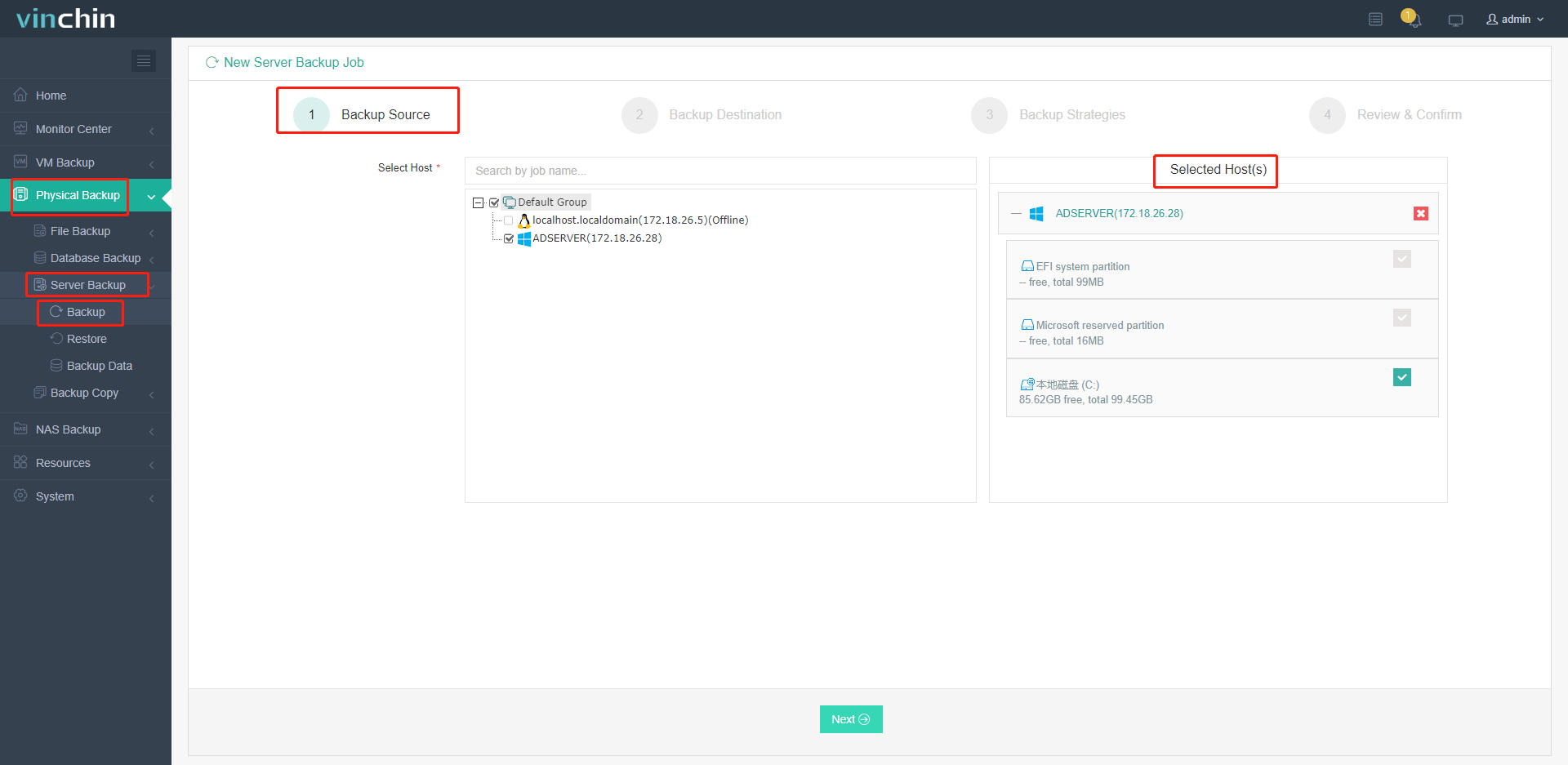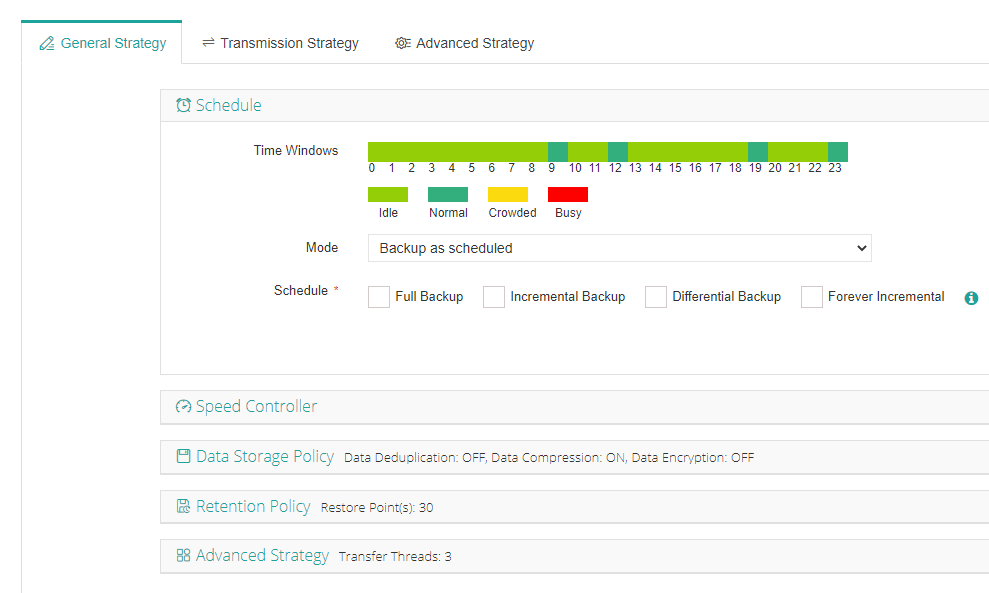-
What Is Server Cloud Backup?
-
Why Choose Server Cloud Backup?
-
How to Back Up Servers Using Built-In Tools and Scripts?
-
How to Implement Hybrid Server Cloud Backup Solutions?
-
How Vinchin Simplifies Enterprise Server Cloud Backups?
-
Server Cloud Backup FAQs
-
Conclusion
Data is the backbone of every business. Losing it can mean lost revenue, downtime, or even the end of operations. Server cloud backup is now a must-have for IT teams. But what does it really mean, and how do you get started? Let’s break it down, step by step.
What Is Server Cloud Backup?
Server cloud backup is the process of copying your server’s data to a secure, remote cloud location. This ensures your files, databases, and system images are safe from local disasters, hardware failures, or cyberattacks. According to HPE, cloud server backup means storing important data from your company’s servers in the cloud, away from your physical site. This off-site storage is managed by a cloud provider, giving you access to your data from anywhere with an internet connection.
Why Choose Server Cloud Backup?
Why are so many businesses moving to server cloud backup? The answer is simple: it’s safer, more flexible, and often more cost-effective than traditional methods.
Protection from Disasters: If your office floods or a server fails, your data is still safe in the cloud.
Scalability: Cloud storage grows with your needs. No more buying new hardware every year.
Cost Savings: You pay for what you use, avoiding large upfront investments.
Security: Leading cloud providers use strong encryption and security controls.
Easy Recovery: Restore files or entire systems quickly, often with just a few clicks.
These benefits make server cloud backup a smart choice for organizations of all sizes.
How to Back Up Servers Using Built-In Tools and Scripts?
Many administrators start with built-in tools and scripts to back up servers to the cloud. This approach is flexible and cost-effective, but it requires careful setup.
For Windows Servers:
Windows Server includes Windows Server Backup, which can create local backups. To send these backups to the cloud, you can use PowerShell scripts and cloud provider command-line tools.
Example: Backing Up to Google Cloud Storage
1. Install gsutil: Download and install the Google Cloud SDK.
2. Create a Backup: Use Windows Server Backup to create a backup file (e.g., C:\Backups\serverbackup.bak).
3. Upload to Cloud: Open PowerShell and run:
gsutil cp C:\Backups\serverbackup.bak gs://your-bucket-name/
4. Automate: Schedule this script with Task Scheduler for regular backups.
For Linux Servers:
Linux offers tools like rsync and cron for local backups. To move data to the cloud, use provider CLI tools.
Example: Backing Up to AWS S3
1. Install AWS CLI: Follow AWS CLI installation instructions.
2. Create a Backup: Use tar or rsync to create a backup archive.
tar czvf /backups/serverbackup.tar.gz /etc /var/www
3. Upload to S3:
aws s3 cp /backups/serverbackup.tar.gz s3://your-bucket-name/
4. Automate: Add the commands to a cron job for daily or weekly backups.
Best Practices:
Encrypt Backups: Use built-in encryption or encrypt files before uploading.
Monitor Jobs: Set up email alerts for failed backups.
Test Restores: Regularly restore files to ensure your backups work.
This method gives you control and transparency, but it does require scripting skills and regular monitoring.
How to Implement Hybrid Server Cloud Backup Solutions?
Hybrid server cloud backup combines local and cloud backups for extra safety. Why settle for one when you can have both?
What Is Hybrid Backup?
Hybrid backup means you keep a local copy of your data for fast restores and a cloud copy for disaster recovery. If your server fails, you can restore from the local backup. If your site is lost, you can recover from the cloud.
How to Set Up Hybrid Backup?
1. Local Backup: Use tools like Windows Server Backup or rsync to create backups on a local NAS or external drive.
2. Cloud Sync: Use cloud CLI tools (like gsutil or aws s3) to copy the local backup files to your cloud storage.
3. Automation: Schedule both local and cloud sync jobs using Task Scheduler (Windows) or cron (Linux).
4. Monitoring: Use scripts or third-party monitoring tools to check backup status and send alerts.
Example Workflow:
At midnight, your server creates a local backup.
At 1 a.m., a script uploads the backup to the cloud.
If you need a quick restore, use the local copy.
If disaster strikes, restore from the cloud.
Benefits:
Speed: Local restores are fast.
Redundancy: Cloud copies protect against site-wide disasters.
Flexibility: You can adjust schedules and retention policies as needed.
Hybrid backup is a best practice for organizations that want both speed and resilience.
How Vinchin Simplifies Enterprise Server Cloud Backups?
For organizations seeking an enterprise-grade solution that supports most mainstream Windows and Linux operating systems—including Windows first—Vinchin Backup & Recovery delivers robust protection across platforms such as Ubuntu, RHEL, SLES, Rocky Linux, Oracle Linux, Debian and more commonly used distributions in modern IT environments. Vinchin Backup & Recovery provides real-time protection through Continuous Data Protection (CDP), continuously replicating critical data onto standby machines while monitoring heartbeat signals; if failure occurs on any primary machine it automatically triggers failover processes then synchronizes changes back once normal operation resumes.
When configuring standard jobs in Vinchin Backup & Recovery's intuitive web console administrators benefit from features including forever incremental backups that minimize storage usage; advanced Deduplication and Compression; Changed Block Tracking; instant recovery capabilities; as well as bare-metal recovery options—together ensuring efficient resource utilization while maximizing uptime during recovery scenarios.
Backing up servers with Vinchin Backup & Recovery involves four straightforward steps via its user-friendly web interface:
1.straightforward:Select the Windows machine to protect

2. Choose your preferred storage target

3. Define scheduling/compression/incremental strategies per requirements

4. Submit job
Recognized globally by thousands of enterprises—with top ratings—Vinchin Backup & Recovery offers unmatched reliability at scale; try its full-featured 60-day free trial today by clicking below.
Server Cloud Backup FAQs
Q1: How do I restore a single file from a cloud backup?
A1: Use your backup tool’s Restore feature; select only that file—no need for full-server restoration.
Q2: Can I back up both Windows and Linux servers to the same cloud storage?
A2: Yes—most major services/tools support both platforms seamlessly within unified workflows.
Q3: What should I do if my cloud backup job fails?
A3: Check error logs/network connectivity first; rerun job—or contact support if unresolved issues persist.
Q4: How often should I test my server cloud backups?
A4: Perform test restores quarterly at minimum—to verify integrity/reliability under real conditions!
Q5: How do I encrypt my server backups before uploading them?
A5: Enable built-in encryption within software—or manually encrypt archives using gpg/BitLocker/etc.—prior upload.
Conclusion
Server cloud backup is essential for protecting your business data against loss and disaster. Whether you use built-in tools, hybrid solutions, or an enterprise platform like Vinchin Backup & Recovery—regular automated protection keeps operations resilient no matter what happens next!
Share on:






